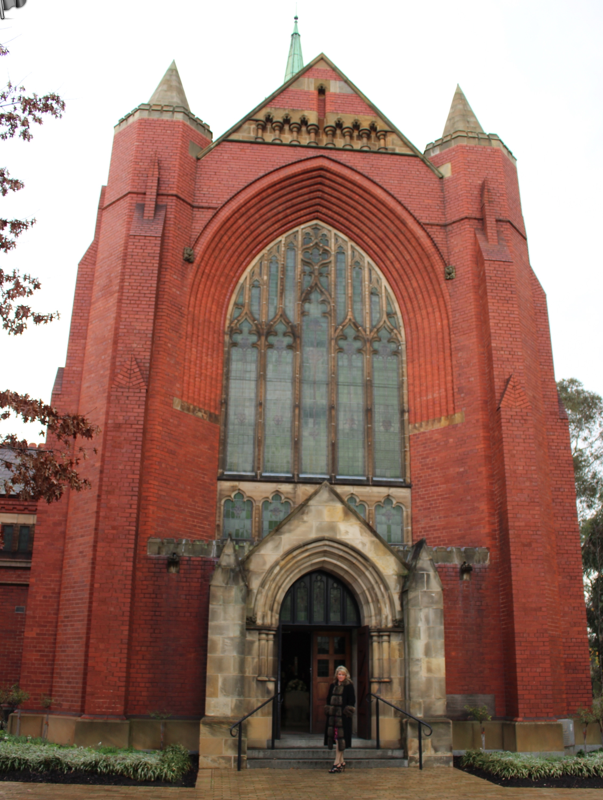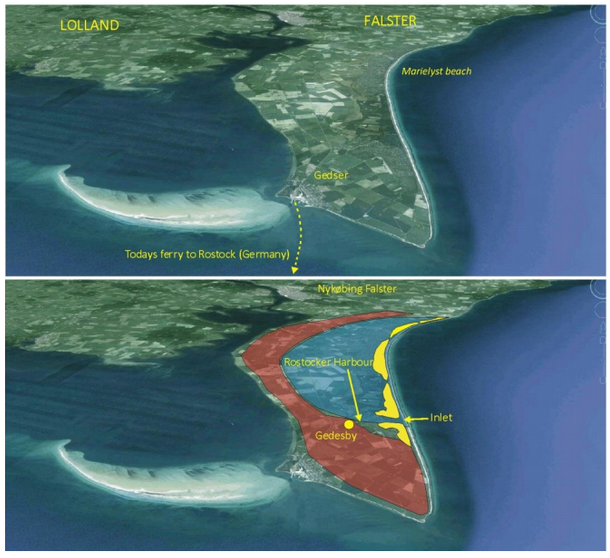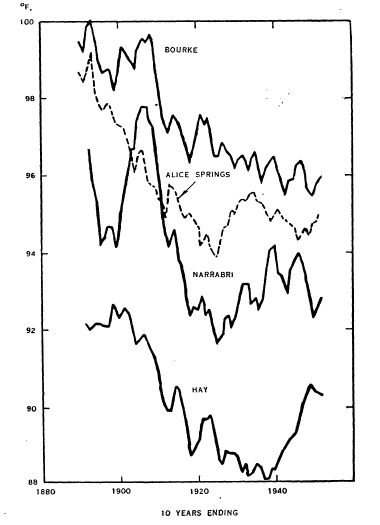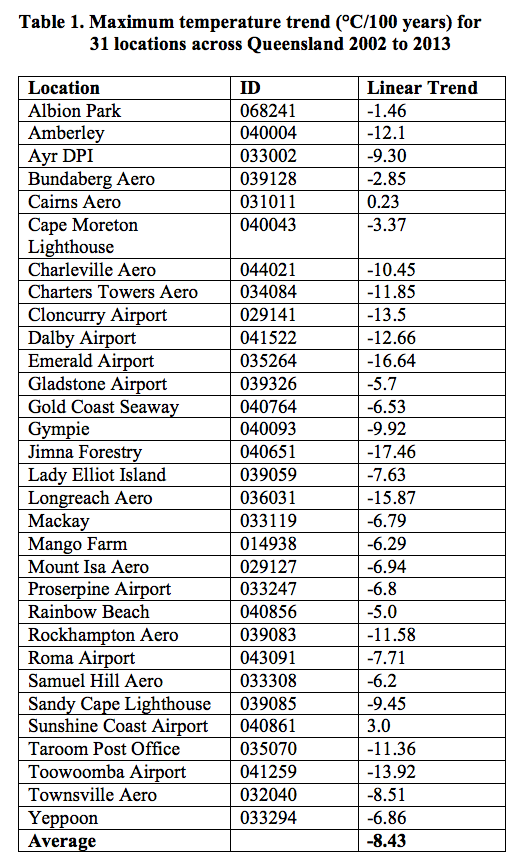“ONLY beliefs are true or false, or sentences that express beliefs.” That’s according to Marianne Talbot, University of Oxford, explaining “critical reasoning” in a course available for download through iTunes. A theory, like anthropogenic global warming, is of course, meant to be scientifically-based so it should be open to logical argument and falsification.

Information
Tangled Temperature Trends
ON 10th June 2014 I sent the Hon Greg Hunt MP, Minister for the Environment, an email suggesting that a cooling temperature trend was establishing across northeastern Australia.
I recently received a reply from the Bureau with a covering letter from Senator Simon Birmingham, in response to this email and also my letter of 4th March. I will reply in due course.
Interestingly on the sixth page of this document, the Bureau both makes the point that 2013 was the hottest year on record for Queensland, while conceding that the period 2002-2013 shows short-term cooling.
This potential tangling of trends is not acknowledged, let alone reconciled in the document from the Bureau.
According to the Bureau the cooling is consistent with increases in monsoonal rainfall. But I thought there was drought over much of this period, that is from 2002-2013?
At the top of the next page (scroll to page 7), the Bureau points out that over time periods sufficiently long for ENSO-related variability to be smoothed out, there is a clear and sustained warming signal from the 1950s onwards.
I don’t think I ever disputed that the late 20th Century experienced warming, but the point that seems to be lost on the Bureau is that a cooling trend may have since set-in. Indeed, Table 1 (reproduced from my email to the Minister of 10th June) suggests quite dramatic cooling.
Of course in my email of 10th June I explained why this cooling is irreconcilable with the claims in the State of the Climate Report 2014 of record warming. It comes down to the apparent recent record warm years being a consequence of the two-step homogenisation process providing a revisionist approach to ensure the official temperature statistics are politically correct.
After the Inlet to Rostocker Harbour Closed Over
There is nothing sustainable about the current management of the Lower Murray and its crippled estuary. Lakes Albert and Alexandrina are vast shallow near-coastal lagoons that started to dry-up during the recent Millennium drought (2003-2009). Despite legislation to mandate the buyback of over 3,000 GL of water, when the next drought is properly upon us it’s almost inevitable that water levels will again recede and its possible that Lake Albert (without a direct connection to the Murray River or the ocean) could dry-up altogether. If this were to happen, the South Australian government might consider reclaiming the area for farming or as a nature reserve. Indeed forested fields known as the Bøtø Nor in Denmark were once Rostocker Harbour – that was before the inlet to the Harbour became choked with sand.
The region has a similar geological history to the Lower Murray. The gradual melting of the last of the ice sheets in North America, Greenland and Antarctica resulted in significant sea level rise about 7,000 years ago. This resulted in the Southern Ocean flooding into an area of subsidence to the east of the Mount Lofty Ranges in South Australia, an area now known as the Lower Lakes. At about the same time an area of land between Denmark and Germany was flooded.
In southern Australia as the sea pushed in, the Murray River was pushed back. A new estuary began to form with the Southern Ocean initially regularly washing in to the entire area through a wide opening. From the beginning, localised wave action would have deposited sand at the margins of the seaward opening of the young estuary slowly building sand flats, then beaches. Beaches build as sand from wave action is deposited higher and higher. When dry sand from the beach is blown beyond the reach of the waves, and then a bit further, sand dunes start to form.
This process resulted in the development of a string of barrier islands across the lower Murray and also along the modern Danish and German North Sea coast.
Barrier Islands usually form perpendicular to the dominant wave direction. In the case of the Danish coastline, the islands formed about 2 km east of the main coastline, leaving a sheltered area, a fine natural harbour, between the developing peninsula and the island of Falster.
By 1135 the town of Gedesby within Rostocker Harbour was a major port. In 1571 Sofie, queen to the Danish King Frederik II ordered the building of a ferry hotel at the harbour so she had somewhere appropriate to stay en-route to her homeland of Germany. In 1716 Tsar Peter the Great arrived with his ship in Rostocker Harbour and apparently stayed at this same ferry hotel. But within 50 years the entrance to the harbour had been in-filled with sand. Today, the body of water that once provided safe passage to rulers of both Russia and Denmark is a forested field. Gedesby is now located about 1.5 km inland from the modern east coast of Falster.

This article was first published at Myth and the Murray. It draws on information provided in the June 2013 issue of www.climate4you.com and the figure is reproduced from page 30.
Acknowledgement of the Need for Management of Australia’s Rangelands
FANCY an article on the Australian Broadcasting Corporation website suggesting that, “the rangelands are overall, in remarkably good health”. Not only that, but the recent article suggested there is a role for landholder in the management of Australia’s rangelands. 
As Barry Traill explained:
“Ecologists worry that with disappearance of the rangelands’ custodians there will be an explosion in invasive animal and plant species.
“The outback is one of the few great natural places in the world but it needs people to manage it with fires, and to manage the feral animals.”
Three Facts Most Sceptics Don’t Seem to Understand
A couple of weeks ago I had the opportunity to attend the Ninth International Conference on Climate Change (ICCC9) in Las Vegas. If you ever doubted scepticism towards man-made global warming as a growing social movement, well, you couldn’t after attending that conference with hundreds of enthusiastic doubters in attendance and some 6,000 watching online. 
But I came away wondering about the culture that is developing around the movement, and whether it is truly one of enlightenment.
Most of us share enlightenment values. And skepticism is historically associated with the Enlightenment. But it should be skepticism of entrenched dogmas, not an automatic opposition to every new big idea. Indeed the enlightenment saw big ideas progress; ideas that once realized, dramatically improved the human condition.
Many sceptics apparently think that we have won the scientific argument, and that our next objective should be the dismantling of climate policies and climate research. But they are wrong. We have not won the scientific argument and we won’t, if we continue down the current path of suggesting that we can’t forecast weather or climate. This suggestion, that we can’t forecast, was often made at the conference and made again just last week by Jo Nova quoting Don Aitkin.
The history of science suggests that paradigms are never disproven, they are only ever replaced. Physicist and philosopher, the late Thomas S. Kuhn, also explained that competition within segments of the scientific community is the only historical process that ever actually results in the rejection of one previously accepted theory or in the adoption of another.
In short, if our movement really wants to see the overthrow of the man-made global warming paradigm, it needs to back alternatives and promote new research.
Assuming we are indeed a movement with a desire to contribute in a tangible way to climate science, and a movement looking for viable alternative paradigms, then we need a way of sorting through incommensurable perspectives, and also a way of ensuring that the most promising research is promoted.
Let me make these points in a bit more detail:
1. We have not won the scientific argument.
It was repeatedly suggested at the ICCC9 conference that those sceptical of man-made global warming have some how won the scientific argument. This is nonsense.
On my arrival back in Australia I was forwarded yet another letter from an Australian government official reiterating that: “The Australian Government accepts the science of climate change and takes its primary advice on climate change from the Bureau of Meteorology and CSIRO. This advice aligns with information provided by the IPCC and national and international organisations such as the Australian Academy of Science, World Meteorological Organisation, the Royal Society in the United Kingdom, and the National Academy of Sciences, National Oceanic and Atmospheric Administration, and National Aeronautics and Space Administration (NASA) in the United States.”
The letter goes on to state that, “The world’s leading scientific organisations have found that the Earth’s climate is changing and that humans are primarily responsible…”
Not only do these esteemed organisations accept anthropogenic global warming theory (AGW), they also work actively with the mainstream media to crush, ridicule or quarantine any criticism of AGW.
If those sceptical of man-made global warming can be accused of denial, it is of this fact. We might be having some impact on the political process, even achieving repeal of the carbon tax in Australia, but the science of anthropogenic global warming remains as firmly entrenched as ever especially amongst the media, academics and legislators.
2. Rebuttals don’t overthrow established paradigms.
Anthropogenic global warming is a fully functional, well-funded scientific paradigm that is having a major impact on social and economic policy in every western democracy.
As I explained in session 13 at the conference: Scientific disciplines are always underpinned by theories that collectively define the dominant paradigm. In the case of modern climate science that paradigm is AGW. It defines the research questions asked, and dictates the methodology employed by the majority of climate scientists most of the time. AGW may be a paradigm with little practical utility and tremendous political value, but it’s a paradigm none-the-less. The world’s most powerful and influential leaders also endorse AGW.
In a lecture to the Commonwealth Club in San Francisco in September 2003 Michael Crichton said: “The greatest challenge facing mankind is the challenge of distinguishing reality from fantasy, truth from propaganda. Perceiving the truth has always been a challenge to mankind, but in the information age (or as I think of it, the disinformation age) it takes on a special urgency and importance.”
Scientists are meant to know the difference between fact and fiction and as a first check of the reliability of a source of information they will often ask if it has been “peer-reviewed”. Peer-review means that research findings are conducted and presented to a standard that other scientists working within that field consider acceptable. This is normally achieved through publication in a scientific journal and involves the editor of the journal asking for comment on the validity, significance and originality of the work from other scientists before publication. In short, the system of peer-review means scientific research is subject to independent scrutiny but it doesn’t guarantee the truth of the research finding.
In theory rebuttals play an equal or more important role than peer review in guaranteeing the integrity of science. By rebuttals I mean articles, also in peer-reviewed journals, that show by means of contrary evidence and argument, that an earlier claim was false. By pointing out flaws in scientific papers that have passed peer-review, rebuttals, at least theoretically, enable scientific research programs to self-correct. But in reality most rebuttals are totally ignored and so fashionable ideas often persist even when they have been disproven.
Consider, for example, a paper published in 2006 by marine biologist, Boris Worm, and coworkers, in the prestigious peer-reviewed journal Science. The study was based on the meta-analysis of published fisheries data and predicted the collapse of the world’s fisheries by 2048. Publication of the article by Worm et al. was accompanied by a media release entitled “Accelerated loss of ocean species threatens human well-being” with the subtitle “Current trend projects collapse of all currently fished seafoods before 2050”.
Not surprisingly, given the importance of the finding, the article attracted widespread attention in the mainstream media and also within the scientific community. But not everyone agreed with the methodology used in the Worm study. Eleven rebuttals soon appeared, many within the same journal Science, and within months of the original article.
The rebuttals, however, scarcely altered the scientific perception of the original article.
In a comprehensive study of this, and six other high-profile original articles and their rebuttals, Jeannette Banobi, Trevor Branch and Ray Hilborn, found that at least in marine biology and fishery science rebuttals are for the most part ignored.
They found that original articles were cited on average 17 times more than rebuttals and that annual citation numbers were unaffected by rebuttals. On the occasions when rebuttals were cited, the citing papers on average had neutral views on the original article, and incredibly 8 percent actually believed that the rebuttal agreed with the original article.
Dr Banobi and coworkers commented that: “We had anticipated that as time passed, citations of the original articles would become more negative, and these articles would be less cited than other articles published in the same journal and year. In fact, support for the original articles remained undiminished over time and perhaps even increased, and we found no evidence of a decline in citations for any of the original articles following publication of the rebuttals…
“Thus the pattern we observed follows most closely the hypothesis of competing research programs espoused by Lakatos (1978): in practice, research programs producing and supporting the views in the original papers remained unswayed by the publication of rebuttals, thus significant changes in these ideas will tend to occur only if these research programs decay and dwindle over time while rival research programs (sponsored by the rebuttal authors) gain strength.”
Indeed it is the naive view that scientific communities learn from obvious mistakes. And as past failures become more entrenched it can only become increasingly difficult to distinguish truth from propaganda, including in the peer-reviewed literature.
3. Paradigms are never disproven: they are only ever replaced.
Since my return from the conference, it has been suggested to me that the ‘new paradigm’ for climate science is the one described in the Nongovernmental International Panel on Climate Change (NIPCC) reports, in particular the ‘null hypothesis paradigm’ that according to many skeptics, is far better at accounting for climate phenomena than are the General Circulation Models. I disagree.
The null hypothesis refers to the general statement or default position that there is no relationship between two measured phenomena. In the case of NIPCC the claim is that “nature not human activity rules the climate”. But this tells us almost nothing. In many ways it’s a cop-out. It’s like a theory of electricity without any explanation of charge, voltage or magnetism.
A good test of the value of any scientific theory to those external to the discipline is its utility. For example the calendars that were developed based on Nicolas Copernicus’ Heliocentric Theory of the Universe were better calendars than those based on Ptolemy’s Handy Tables. The new calendars, based on a new theoretical approach, more precisely predicted the position of the sun and the planets and thus the seasons, which, of course, influence the weather. In the same way, those who want to see AGW theory discarded need to increase their expectations of climate science and in particular demand some practical benefits. The most obvious would be better weather and climate forecasts.
Last year, aversion to a new theory attributing solar variability to gravitational and inertial effects on the sun from the planets and their satellites, not only resulted in the premature termination of a much-needed new journal (Pattern Recognition in Physics), but was also mocked by leading skeptical bloggers. More recently leading skeptical bloggers, Willis Eschenbach and Lubos Motl, were far too quick to attack a new notch-delay solar model that David Evans and Jo Nova developed in an attempt to quantify the difference between total solar irradiance and global temperatures and in the process forecast future climate.
In attempting to understand Dr Motl’s issues with Evans and Nova’s model, I was told that my work with John Abbot forecasting rainfall was also no better than “a sort of magic” because, like Evans and Nova, I was describing relationships “without a proper understanding of which variables are really driving things”. To the layman the few paragraphs of relevant jargon that Motl posted at his blog may have given the impression of some special knowledge, but in reality he was just repeating prejudices including the popular claim that climate is essentially chaotic.
Over the last few years my main focus of research has been on medium-term monthly rainfall forecasts. Not using General Circulation Models (GCMs) that attempt to simulate the climate from first principles, but rather using artificial neural networks (ANNs), which are a form of artificial intelligence and a state-of-the-art statistical modeling technique. John Abbot and I very quickly established that our method – which relies on mining historical climate data for patterns and then projecting forward – could produce a much more skillful medium term rainfall forecast than the Australian Bureau of Meteorology’s best GCM.
Of course the use of statistical models for forecasting is not new, nor is pattern analysis. Many long-range weather forecasters and astrophysicists rely on lunar, solar and planetary cycles to forecast both weather and climate.
So, I was somewhat surprised to hear so many big names at the conference claim from the podium that it would never be possible to forecast weather more than a few days in advance, some going as far to suggest, like Lubos Motl, that climate is essentially a chaotic system.
Such claims are demonstrably false. Indeed that our ANNs (see Atmospheric Research 138, 166-178) can generate skillful monthly rainfall forecast up to three months in advance, is evidence that we are not dealing with a chaotic system.
Until skeptics start thinking about these issues and the need to back something, rather than perhaps always being too keen to knock the next big idea, we won’t truly make progress towards replacing the current dominant paradigm in climate science.
Fewer Deaths from Heat Events, But Reasons Obscured
MORE people died in Australia from extreme heat events in 1896 than in any other year, with 450 dead nationally. The second worst year was 2009 with 432 dead, followed by 1939 with 420. Considering these numbers in terms of total population, then we have a decline from about 13 dead per 100,000 in 1896, to 6 per 100,000 in 1939, to just 2 per 100,000 in 2009.
That’s according to a new paper by Lucinda Coates and colleagues from Risk Frontiers, Macquarie University and the Bushfire Cooperative Research Centre, Melbourne. The paper is entitled, ‘Exploring 167 years of vulnerability: An examination of extreme heat events in Australia 1844-2010’, and published by Environmental Science and Policy (volume 42, pages 33-44).
Coates and colleagues indicate that since 1844 extreme heat events in Australia have killed at least 5,332 people. Most deaths have occurred in January, and within January, most deaths occur on 27th January, which is the day after our national Australian Day holidays.
There are spikes in the total number dead, and also death rate in 1896, 1908 and 1939, Figure 1.

High death rates in 1912, 1914, 1927 and many years in between, suggest higher mortality due to extreme heat events during the early 20th Century. This is consistent with early publications on temperature trends in Australia. For example, a 1953 paper by E.L. Deacon (Australian Journal of Physics, volume 6, pages 209-218) shows the ten-year running average of mean summer maximum temperatures for several locations in central and eastern Australia peaked in the late 1800s, Figure 2.

This is generally consistent with the unhomogenized temperature record for eastern Australia (see for example Jennifer Marohasy et al. The Sydney Papers Online, Issue 26).
Apparently ignorant of this early publication by Deacon, and the unhomogenized temperature record for Australia, Coates et al. do not make the link between the higher death rate in the early 20th Century and the higher temperatures.
Rather, relying on recent reports from the CSIRO and Bureau of Meteorology, they simply state that since 1950 each decade has been warmer than the previous. While technically correct, such a statement ignores the very hot decades of the late 1800s and early 20th century and as such is misleading.
Coates goes on to state that, “Without adaptive measures, the conjunction of expectations for extreme heat events to be of greater frequency, duration and intensity and an ageing and increasing population suggests an increase in future heat-related fatalities.”
They attribute the fall in the decadal death rate from 1.69 deaths per 100,000 population in the 1910s to 0.26 in the 2000s to a “variety of factors, but mainly to reduced numbers of people working outside, a better informed public, greater freedom of dress and improvement in utilities and services, such as home cooling, access and breadth of health services including aged care services, warning systems and rescue services.”


 Jennifer Marohasy BSc PhD has worked in industry and government. She is currently researching a novel technique for long-range weather forecasting funded by the B. Macfie Family Foundation.
Jennifer Marohasy BSc PhD has worked in industry and government. She is currently researching a novel technique for long-range weather forecasting funded by the B. Macfie Family Foundation.